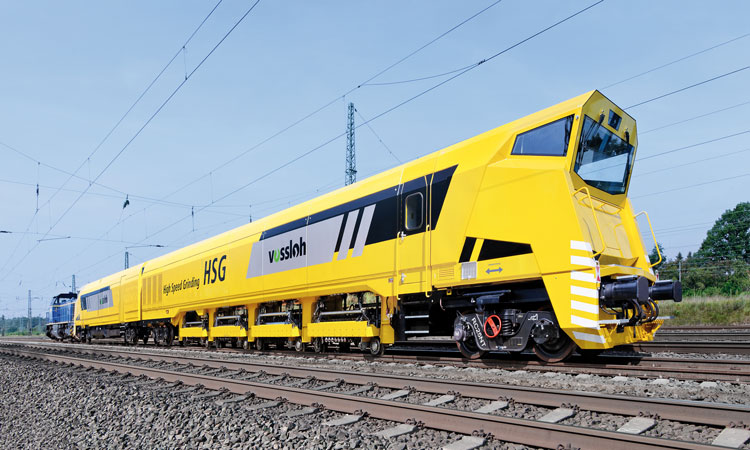DB Netz extends preventive rail maintenance contract
Posted: 15 September 2022 | Global Railway Review | No comments yet
DB Netz have ordered innovative high-speed grinding activity to be carried out across 12,000km of its rail tracks during 2023.


DB Netz AG, the railway infrastructure manager of Deutsche Bahn AG (DB), and Vossloh have significantly extended their existing framework agreement for preventive rail maintenance.
The contract now covers an infrastructure volume of at least 12,000km in the coming year. The work will, in particular, focus on maintaining the highly utilised lines of the German rail network, the so-called high-performance network, using high speed grinding (HSG) technology. In addition, a digital component has been added to the contract, which means a smart HSG train equipped with extensive measurement and analysis technology will be used to record important track condition data during operation.
Dr. Volker Hentschel, Member of the Management Board of DB Netz AG responsible for Asset and Maintenance Management, emphasises the role of preventive rail maintenance: “With this consistent use of HSG technology, DB Netz AG is underlining its claim to meet the increasing loads on the network with innovative solutions. On our high-performance network, the traffic friendly rail maintenance provided by HSG will make a valuable contribution to greater reliability and growth.”


A High Speed Grinding (HSG) train. Credit: Vossloh
Preventive maintenance
HSG technology is used for preventive maintenance of rail networks. Based on a unique grinding process, HSG maintenance machines can be operated at speeds of up to 80km/h on mainline lines. They are equipped with state-of-the-art sensor technology which can simultaneously record condition data of rail tracks during grinding without the need for track closures. The condition data is then collected in real time, evaluated by means of algorithms and can be visualised in a web-based application including concrete recommendations for action. The grinding programme can be individually adapted to the respective track condition. Regular use of the smart HSG machines thus not only effectively prevents rail defects and significantly extends rail service life, but also forms the basis for predictive maintenance of the rail track as the data history grows.
DB recently announced a strategy for strengthening of its high-performance network by 2030. The current highly utilised route connections comprise a total of 3,500 route kilometres and are the focus of this framework agreement. DB expects the highly loaded network to grow to over 9,000 route kilometres by the end of 2030.
Related news you will also enjoy:
Philipp Nagl becomes the new CEO of DB Netz AG
Siemens and DB test hydrogen train and mobile fuelling station for first time
Related topics
Big Data, Digitalisation, Infrastructure Developments, Milling & Grinding, Technology & Software, Track Maintenance Machinery, Track/Infrastructure Maintenance & Engineering







